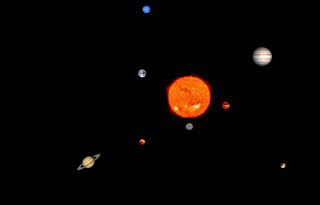The Gravitational
Waves
Gravitational waves are ripples in the fabric of spacetime, predicted by Einstein’s laws of general relativity, but they are incredibly difficult to detect. To see them you need a detector that can accurately measure distances 10,000 times smaller than a proton. Thats crazy! That’s like trying to measure the distance from our Sun to the nearest star to accuracy of the width human hair. But we have a technology on Earth that can do that: ALIGO the Advanced Laser Interferometer Gravitational-wave Observatory, and back in November 2015, on a Monday morning, LIGO detected the first gravitational wave that humans have ever directly observed. Where they came from and what this means for space science is nothing short of mind blowing!
A long long time ago, in a galaxy far faraway. 1.3 billion years ago and1.3 billion light years away, two black holes were stuck in a perilous orbit around one another getting closer and closer. Black holes are incredible objects, they pull of their gravity - the amount they bend spacetime - is so strong that no light can escape them. No one knows what exists in the centre ofa black hole as normal physics completely breaks down. What we do know is that they are infinitely dense. One of these orbiting black holes was 29 times the mass of the Sun and the other was 36 times the mass of the Sun, but they were only about 200km wide. Which is tiny in comparison to the Sun which is over a million kilometres wide! And these black holes were orbiting each other really really fast, about the same frequency as the blade on a blender.
Imagine that, such massive objects rotating so quickly. These orbiting masses created ripples in the fabric of spacetime called gravitational waves, and the closer they orbited the bigger these waves got, until the black holes collided at half of the speed of light. And when they merged they formed a new blackhole that rang kind of like a bell, throwing out colossal amounts of energy as gravitational waves until it settled into a perfect sphere. And all of this happened in 0.2 seconds. And in the collision, they turned a huge amountof mass into gravitational wave energy. They lost a mass equal to three times the mass of the Sun which got turned in to gravitational wave energy by Einsteins equation E=mc^2. This created a huge wake of gravitational waves that ripped out in all directions at the speed of light. And, and this is the thing that gets us, over that last fifth of a second this collision released more than ten times more energy than total output of all of the stars in the entire rest of the Universe! It just completely boggles the mind! Meanwhile on Earth… At this exact time our planet was looking very different to what we see now. It was a barren wasteland, there was no grass or trees, in fact no plants or animals at all. Life at this stage had only come as far as microscopic multicellular creatures that lived in the sea.
And while the gravitational waves tore through space towards us all of the complex life on Earth evolved and grew: plants and animals developed, amphibians crawled on land, there was extinctions, reptiles and dinosaurs and mammals, more extinctions. Primates evolved into all of human civilization right up until Saturday 12th November 2015 when the scientists at LIGO turned it on to begin their initial tests. A mere two days later and just in time the gravitational waves flew past us and the first direct detection on Earth was made. And that sound bumping is actually what these waves sounded like. Even though gravitational-waves are ripples in spacetime and not ripples in the air, they vibrate at similar frequencies, so we canactually turn them into sound waves and listen to them … boop … It might not sound very impressive, but detection of gravitational waves means a huge amount for science. The results of this detection have already been profound. This is the very first time that black holes have been directly detected, in fact gravitational waves are the only way you can directly detect them!
It will hopefully be able to look at what makes stars go supernova, and might be able to probe the very nature of spacetime and see if it is made of things called cosmic strings. But the most exciting thing is that we don’tknow what it will find. This is one of the best parts of science,when you’ve got a new tool to peer into a realm of reality that you’ve never been able to access before. Who knows what you’ll find? May be you’ll discover things that help explain some of the great mysteries of the Universe, maybe we’ll find things that we can’t explain at all, and then we have to come up with new physics. In any case I find it super exciting and no one can’t wait to see more results. So there you go, those are the basics of gravitational wave astronomy.
























































